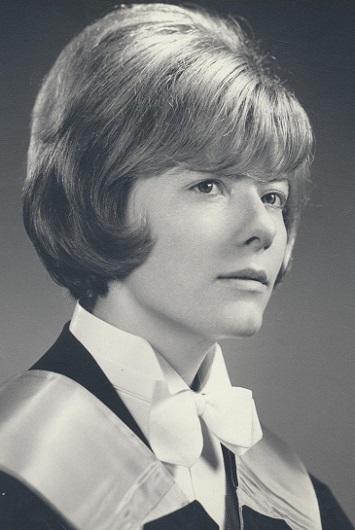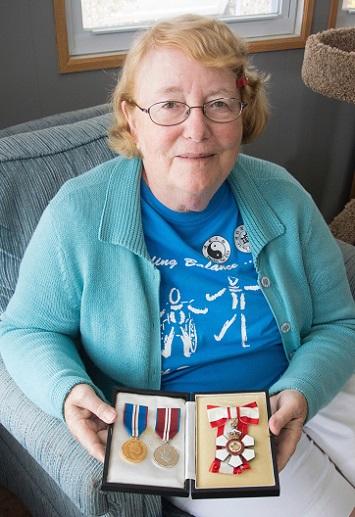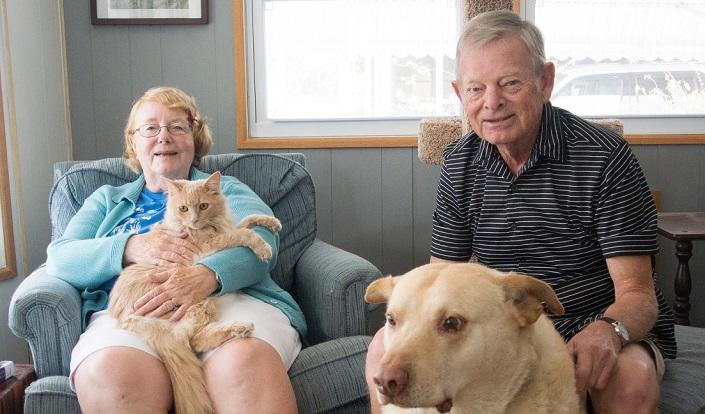


By Alex Latus
Monique Frize (BASc ’66) was the University of Ottawa’s first female engineering graduate. She went on to become a renowned biomedical engineering expert and champion for women in science, technology, engineering and mathematics (STEM). The University library, which hosts the Canadian Archive of Women in STEM, asked her to share her story.
What made you want to study engineering?
I met a young man while playing bridge who introduced me to electrical engineering and his lab, and I adored it. Right away I said, “This is me and that’s what I’m going to do.” We got married a year later, but he died soon after in a car accident. By then it was September 30, 1963 – I had just started school – and I decided, “I have to do this degree for him.” There were times where I didn’t want to keep going, but I did it and it was really by his inspiration.
What was it like studying engineering at uOttawa in the 1960s?
I was the only woman in the whole Faculty of Engineering, which was called Applied Sciences at the time. I sometimes wondered, “What am I doing here? Do I belong?” Those doubts would haunt me from time to time, but mainly I said, “I’m here, I’m going to do this, and I’m staying!” I was very stubborn.
The professors were kind. One would come in and say, “Good morning gentlemen… oh, and lady.” It’s because they didn’t really know how to cope with this change, but I didn’t take it badly. The students were kind as well. The guys in my class – we were 13 – were like brothers. I used to love horseback riding, and this big horse called Thunder threw me off one day. I really hurt my thumb and didn’t go to school for two days. Two guys in my class knocked on my door and said, “You haven’t quit, have you? You’re coming back? The class isn’t the same without you!” That was really heartwarming for me.
Was it difficult getting your first job in a male-dominated industry?
Not really. I had about six interviews before I took a job in Montreal. I think it was good timing as companies were just starting to open their minds to hiring a woman. Women in this field – because it’s so unusual – go absolutely overboard and work hard to prove themselves all the time, so my employers were lucky in a way!
Did you always intend to be a trailblazer for women in STEM or did you fall into the role gradually?
I thought I was a role model because when people asked what I did, I was very proud to say, “I’m an engineer.” But at the time I was trying to solidify my career, so I think it came gradually. Before I got the first Chair for Women in Science and Engineering, I was already visiting schools and really enjoyed meeting young people, especially girls, so I started focusing on that. When the chair opened, I applied for it and realized later that I was a feminist, gradually becoming aware of all the gender issues that I had not really thought about before. It became my passion.
In your 2009 book The Bold and the Brave, you examine the evolving role of women in science and engineering. What has changed and what hasn’t?
If you look at the last 20 years, there has been little change, for example, in harassment. Although there’s the #metoo campaign, there’s still this huge problem of “boys will be boys,” and respect for women is still lacking. Some companies have really good practices and others are still dismal. I tell women to try to find a good company, because there are some really good ones that cater to attracting and retaining women – it really depends where you’re hired.
But enrolment (in STEM programs) has gone up. I was the only woman in my faculty and now there’s about 17% women, so there has been some progress there. The environment and the faculty have improved as well. There were no women professors when I went to school, but now there’s around 10% or 12%. There’s still lots to be done, but it’s better than it was.
How did you get involved with the Canadian Archive of Women in STEM?
About 10 years ago I was looking at new books about science and it was 100% men. Around the same time, somebody called me and said, “The new math textbook – we’d like to have you.” I was the one woman role model in the book. I thought, “My goodness, people don’t know the story of women in STEM!”
Ruby Heap, a history professor at uOttawa, persuaded me to keep all my papers for the archive and now I’m persuading other women. I became convinced that if you’re going to have historians write the stories of women, then you have to have their papers available.
What advice would you give to young women studying now in STEM?
I find a lot of students have very little confidence. They’re always feeling that they’re less of an expert than they are. So I would say to them, “Believe in yourself” and don’t compare yourself to others. As long as you’re better tomorrow than you were yesterday, then you’re making progress. Persist – persisting is very important. Also, you belong there, whether there’s one woman in the class or 20. And know that you will have an interesting future.
